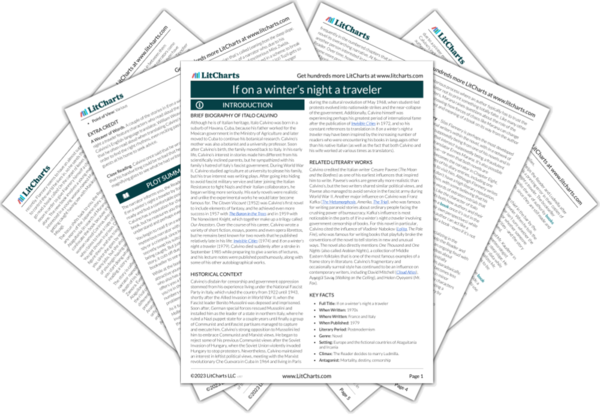Although he is of Italian heritage, Italo Calvino was born in a suburb of Havana, Cuba, because his father worked for the Mexican government in the Ministry of Agriculture and later moved to Cuba to continue his botanical research. Calvino’s mother was also a botanist and a university professor. Soon after Calvino’s birth, the family moved back to Italy. In his early life, Calvino’s interest in stories made him different from his scientifically inclined parents, but he sympathized with his family’s hatred of Italy’s fascist government. During World War II, Calvino studied agriculture at university to please his family, but his true interest was writing plays. After going into hiding to avoid fascist military service and later joining the Italian Resistance to fight Nazis and their Italian collaborators, he began writing more seriously. His early novels were realistic and unlike the experimental works he would later become famous for.
The Cloven Viscount (1952) was Calvino’s first novel to include elements of fantasy, and he achieved even more success in 1957 with
The Baron in the Trees and in 1959 with
The Nonexistent Knight, which together make up a trilogy called
Our Ancestors. Over the course of his career, Calvino wrote a variety of short fiction, essays, poems and even opera librettos, but he remains best known for two novels that he published relatively late in his life:
Invisible Cities (1974) and
If on a winter’s night a traveler (1979). Calvino died suddenly after a stroke in September 1985 while preparing to give a series of lectures, and his lecture notes were published posthumously, along with some of his other autobiographical works.
